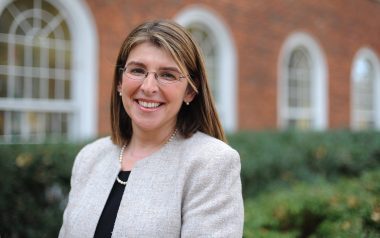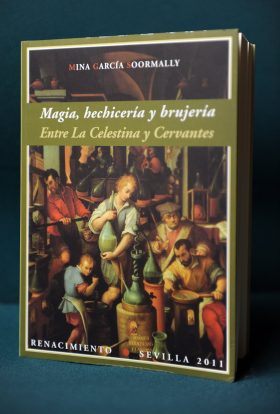In her first book, Mina García Soormally explores why and how 16th to 17th century Spanish authors used superstition in their work.

*******
At the height of the Spanish Inquisition, as royal monarchs enforced Catholic orthodoxy by expelling Jews and Muslims from the nation, it often was dangerous for authors to challenge authority or defend the oppressed even in works of fiction.
One way for novelists to get around such obstacles was through their descriptions of sorcery, witchcraft and magic. Authors of this Early Modern period could free their characters to speak otherwise forbidden truths and commentaries about those in power by placing them under a “spell,” or the influence of mystical characters.
Magia, hechiceria y brujeria: Entre La Celestina y Cervantes (Magic, Sorcery and Witchcraft: Between La Celestina and Cervantes), the first book from Assistant Professor Mina García Soormally in Elon University’s Department of Foreign Languages, explores the use of these themes in a work based off her 2003 doctoral dissertation from the Universidad de Málaga in Spain.
What Fernando de Rojas and Miguel de Cervantes did, as well as other Spanish authors in the Early Modern period, was create literature in which dispossessed populations could identify with the characters, García Soormally explains. For fear of retribution, writers turned to superstition as a literary device that allowed characters to deliver messages that may otherwise have drawn the ire of those in power.
Take Rojas’ novel, La Celestina, published in 1499 as the Inquisition was in full operation. The book’s title is drawn from a character by the same name that uses sorcery to compel another woman, Melibea, to fall in love with a man who had confessed his feelings for her. Through the use of a spell, the author finds a space in which to explore the making of a society ruled by women in a display of independence that was unthinkable in that period.
García Soormally argues that this parallel reality, and not the one described in the main plot, is the one that challenges the status quo and makes the text still relevant today. Although parts of La Celestina were banned by the Inquisition, the majority saw the light due to the didactic message against sorcerers and their arts.

In some of Cervantes works, the same device finds its place as a way of allowing social criticism into main stream literature, conveniently disguised by the dark practices performed by social outcasts in search of a voice.
This is the context in which the monarchy and the Church were struggling to create a homogenous national identity after the expulsion of the Jews and Moors from Spain, a topic on which García Soormally teaches on a regular basis. She adds that she tells her students that for as evil as the Inquisition is seen by some today, it perfectly embodied the nation-building agenda that was sought after at the time, identifying and targeting “the others” as a strategy to create a new Christian Spanish identity.
“Witchcraft provides a space in which those members of society marginalized because of their race, religion or gender find the possibility of flirting with the idea of being included, of acquiring the public recognition that seems impossible any other way,” she said. “Nevertheless, it becomes evident in all these stories that this hope, disguised in the form of a spell, is nothing more than an empty illusion.”
García Soormally joined the Elon faculty in 2007 after earning a second doctorate from Duke University. She is currently working on a second book based on her dissertation from Duke. That dissertation, “Idolatry and the construction of the Spanish empire,” examines the role that the shifting concept of idolatry played in the conquest of the Americas.
Her other research interests include the role of theatre in the expansion of the Spanish empire; Latin American colonial culture and literature; and the scholarship of teaching and learning, among other topics.


